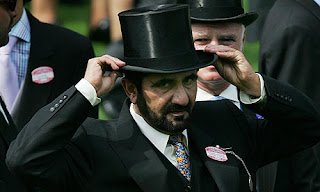Why have I not been updating? Why am I forsaking my precious blog-readers in their time of need? Well don't blame me (ever.), but blame my roommate, because two weeks ago he finally convinced me to open up this book called Atlas Shrugged.

Usually, a book wouldn't be nearly enough to tear me away from my computer screen. In fact, anything short of Miranda Kerr spontaneously Apparating onto my lap wouldn't be enough to tear me away from my computer screen. But Luddites rejoice, Atlas Shrugged has reminded me that there are still things simpler than the internet that are just as fun.
Part of the reason why the novel is so fun is because it's about the total lameness of small-minded liberal folk. And vegetarians. Of course the message is conveyed slightly more eloquently across a thousand-some pages, but the basic tenet remains the same. And now, if you are a liberal and refuse to read it because of what I just said, then you'd just be proving how small-minded you are, and I'd get to make a reference to another one of my favorite books ever: Catch-22, sucker!
My only problem with Atlas Shrugged, though, is that the author does have a fairly transparent habit for self-flattery. Her penname is Ayn Rand, which is already quite unattractive-sounding for a female, but a quick two-minute jaunt through Wikipedia revealed that her birthname was actually much worse. She was born Alisa Zinov'yevna Rosenbaum, which makes me think she probably looked something like this when she was young:

A few years later, after changing her name and transforming from a cardboard cutout into a real person, she looked like this:

She then found an especially flattering picture of herself to print as her author portrait in the book:

And finally, when Rand modeled Dagny Taggart, the main protagonist of Atlas Shrugged, after herself, she made herself look something like this:

And that is why Angelina Jolie has actually been approached to play Dagny Taggart in a possible movie adaptation of the novel.

Usually, a book wouldn't be nearly enough to tear me away from my computer screen. In fact, anything short of Miranda Kerr spontaneously Apparating onto my lap wouldn't be enough to tear me away from my computer screen. But Luddites rejoice, Atlas Shrugged has reminded me that there are still things simpler than the internet that are just as fun.
Part of the reason why the novel is so fun is because it's about the total lameness of small-minded liberal folk. And vegetarians. Of course the message is conveyed slightly more eloquently across a thousand-some pages, but the basic tenet remains the same. And now, if you are a liberal and refuse to read it because of what I just said, then you'd just be proving how small-minded you are, and I'd get to make a reference to another one of my favorite books ever: Catch-22, sucker!
My only problem with Atlas Shrugged, though, is that the author does have a fairly transparent habit for self-flattery. Her penname is Ayn Rand, which is already quite unattractive-sounding for a female, but a quick two-minute jaunt through Wikipedia revealed that her birthname was actually much worse. She was born Alisa Zinov'yevna Rosenbaum, which makes me think she probably looked something like this when she was young:

A few years later, after changing her name and transforming from a cardboard cutout into a real person, she looked like this:

She then found an especially flattering picture of herself to print as her author portrait in the book:

And finally, when Rand modeled Dagny Taggart, the main protagonist of Atlas Shrugged, after herself, she made herself look something like this:

And that is why Angelina Jolie has actually been approached to play Dagny Taggart in a possible movie adaptation of the novel.









